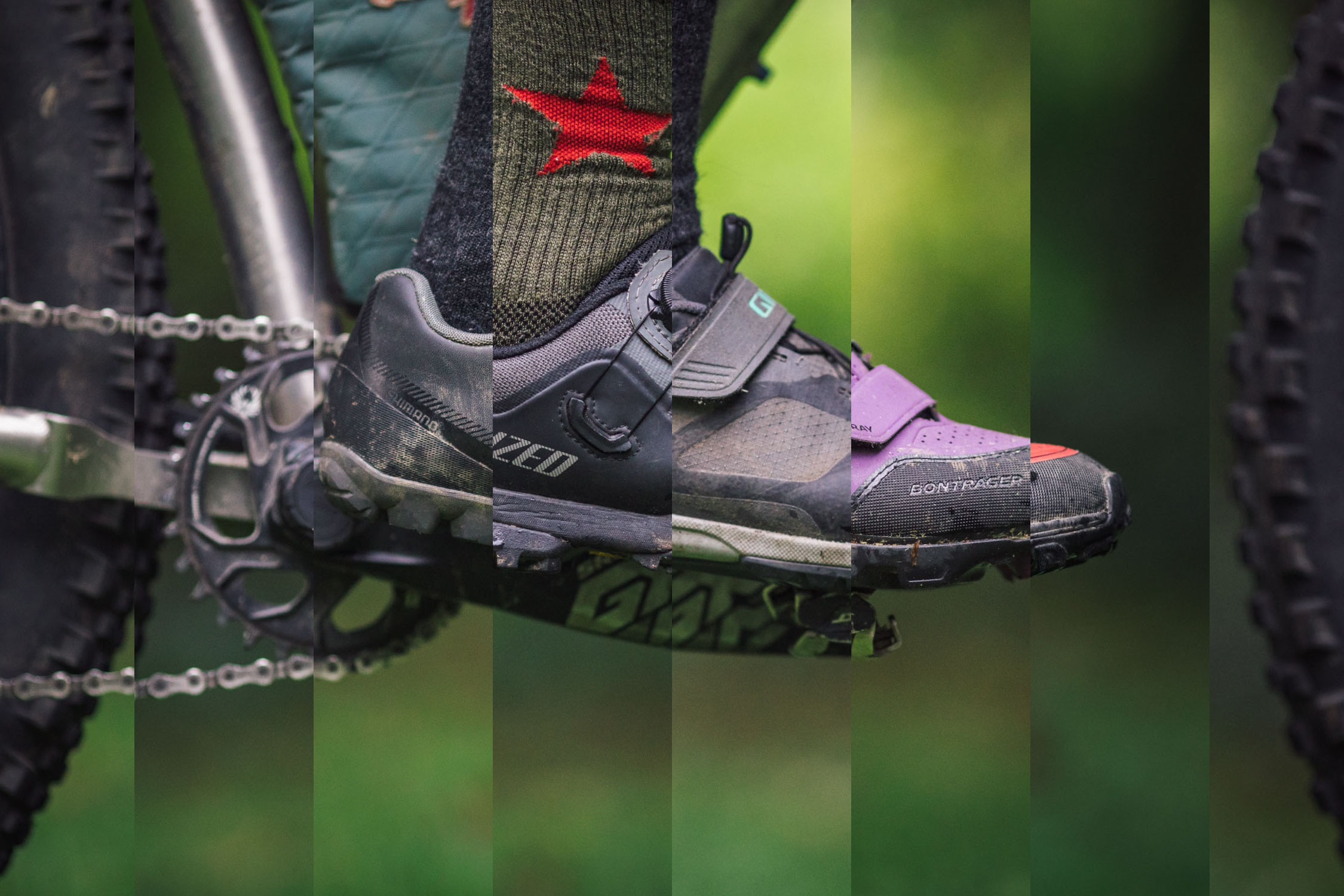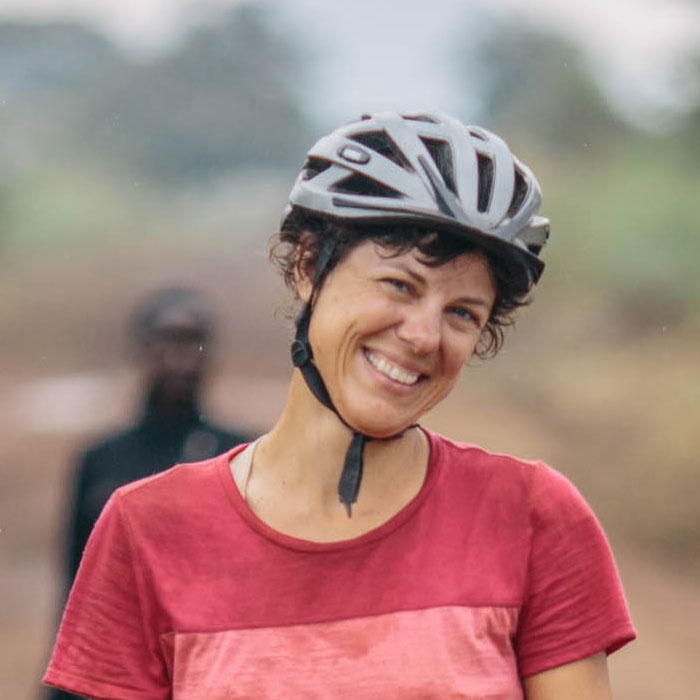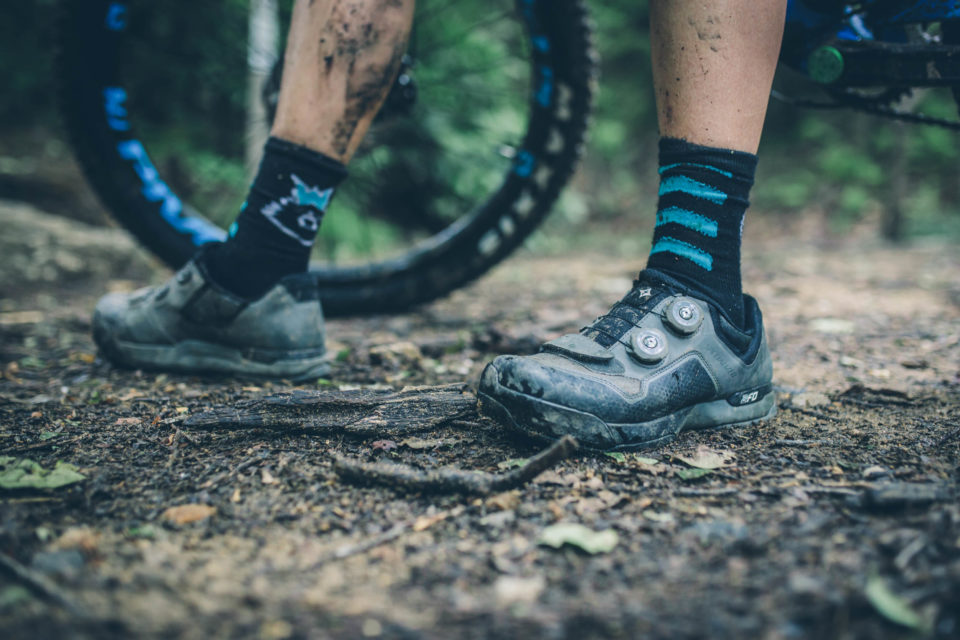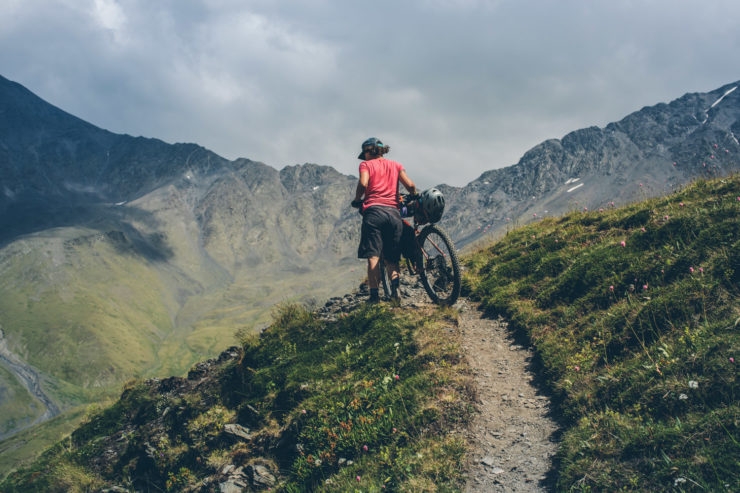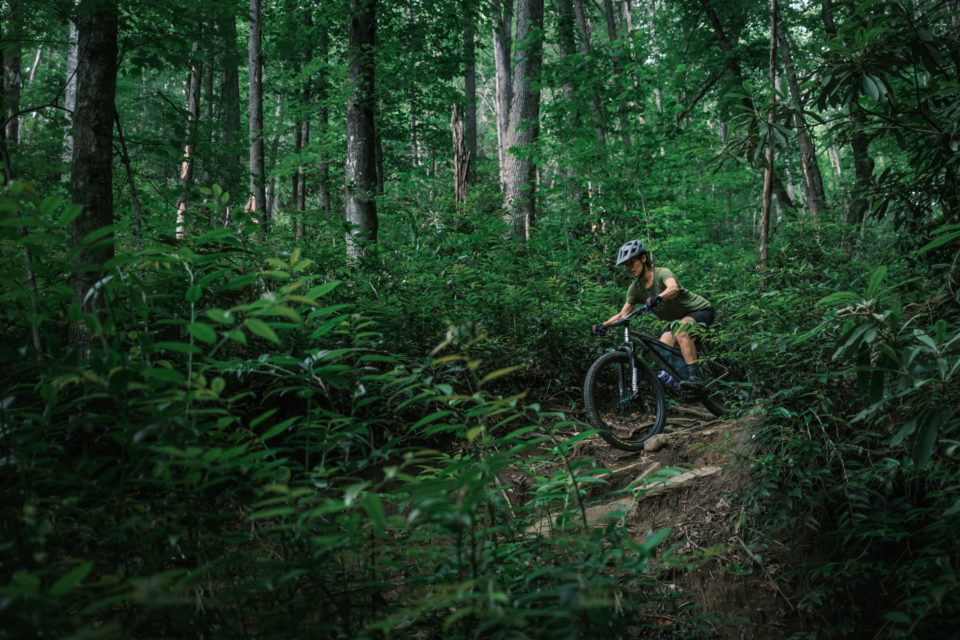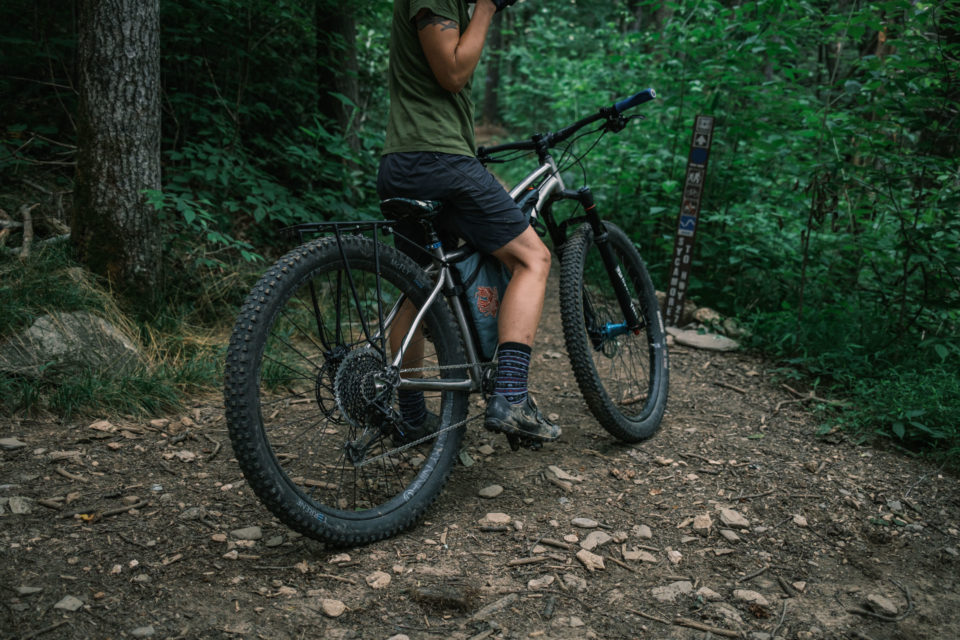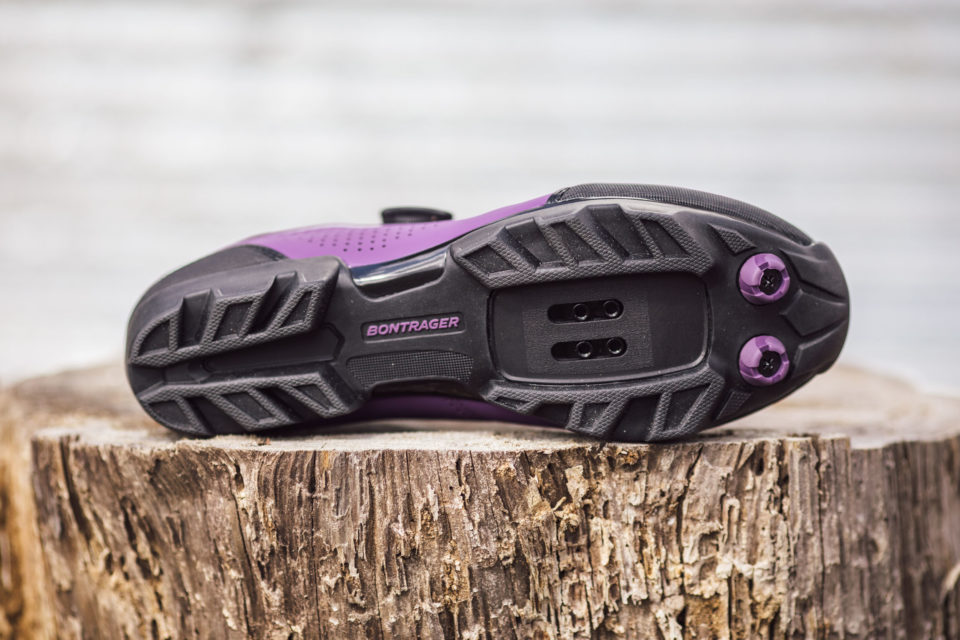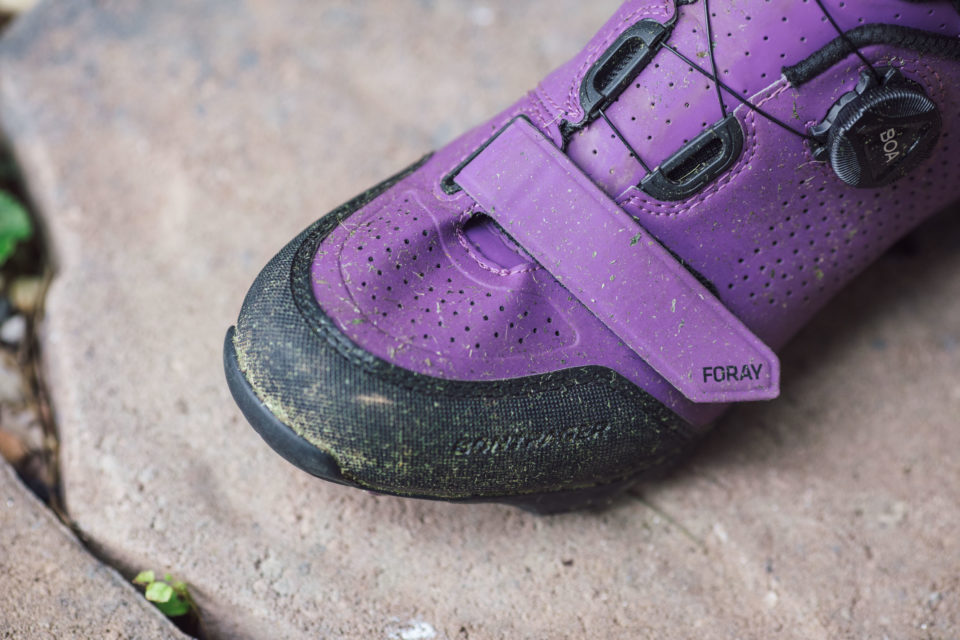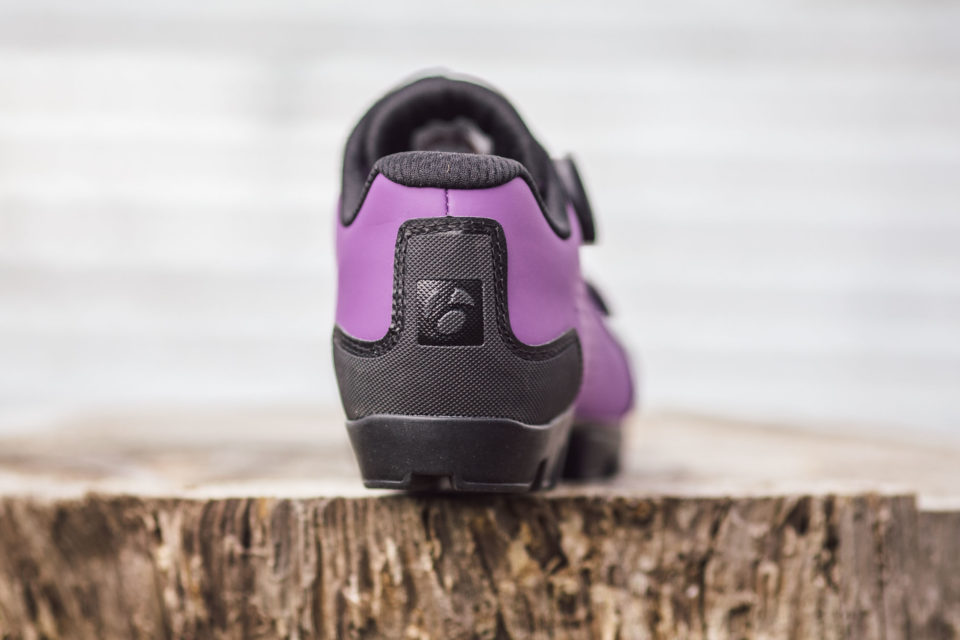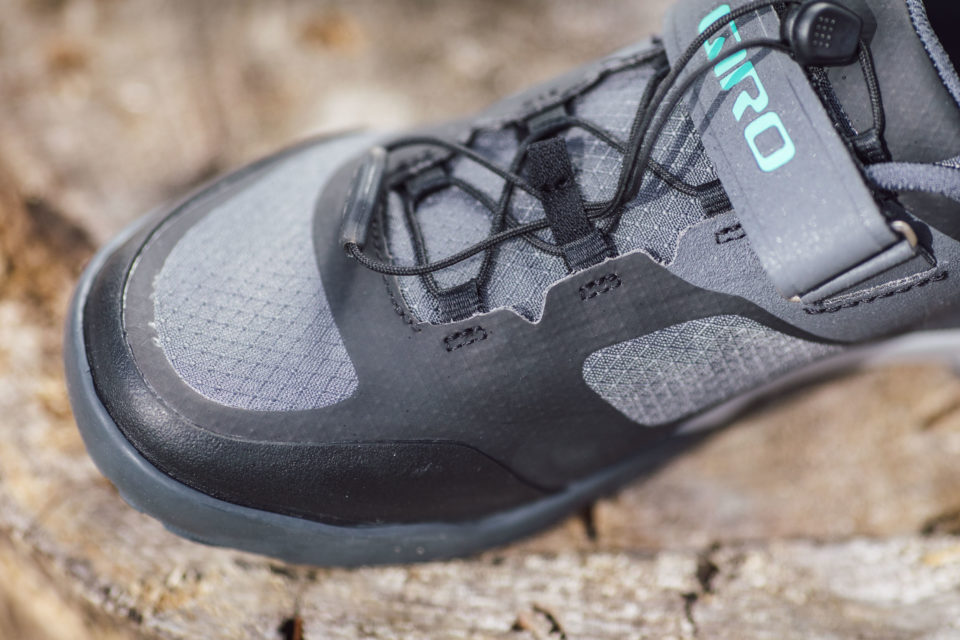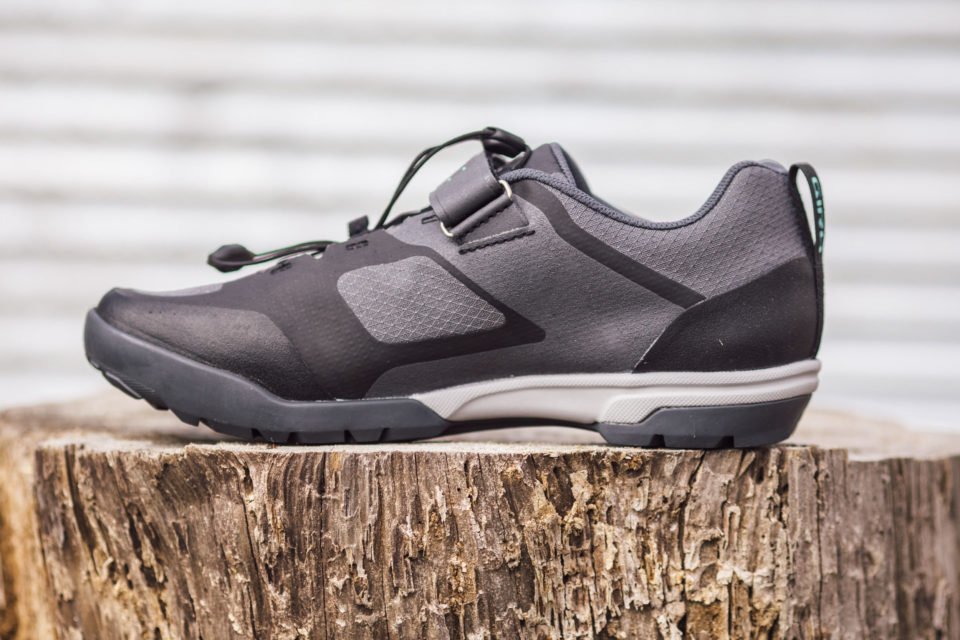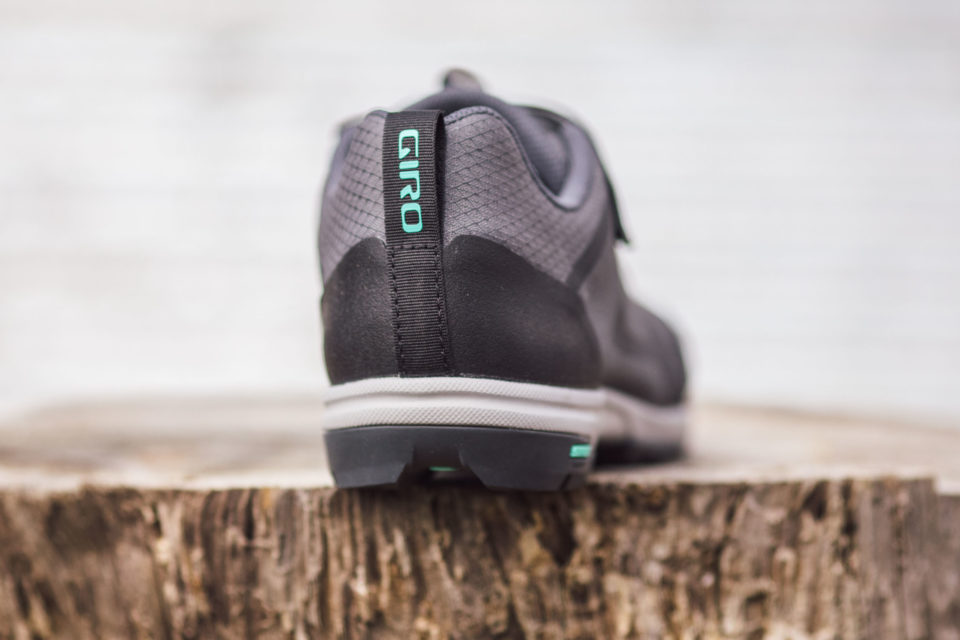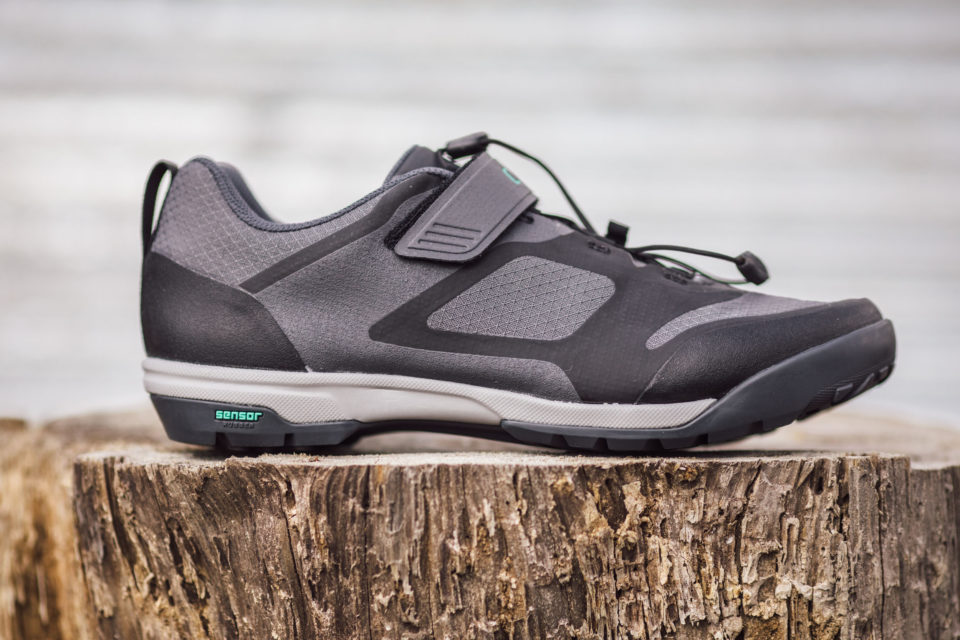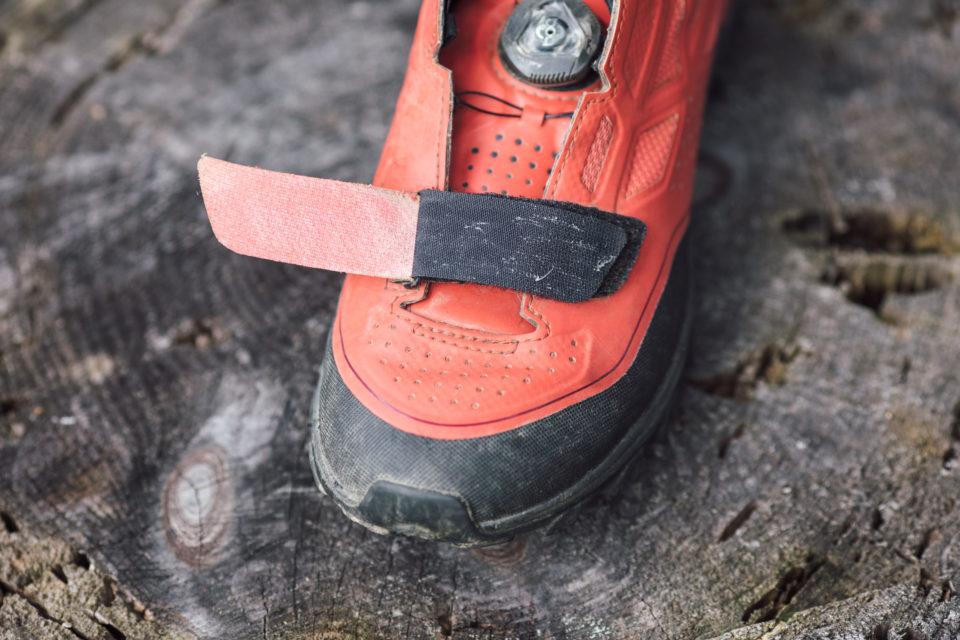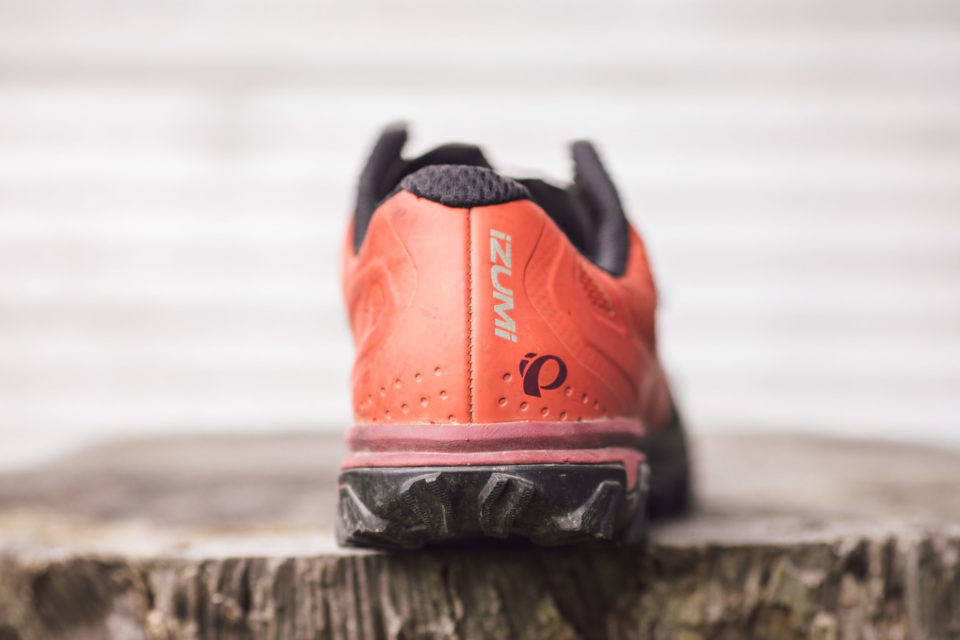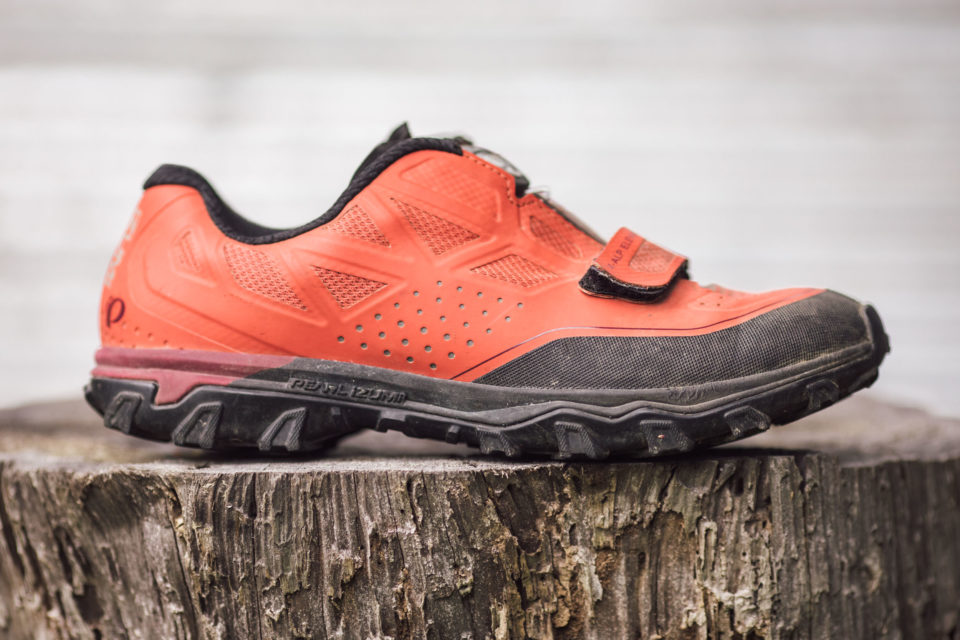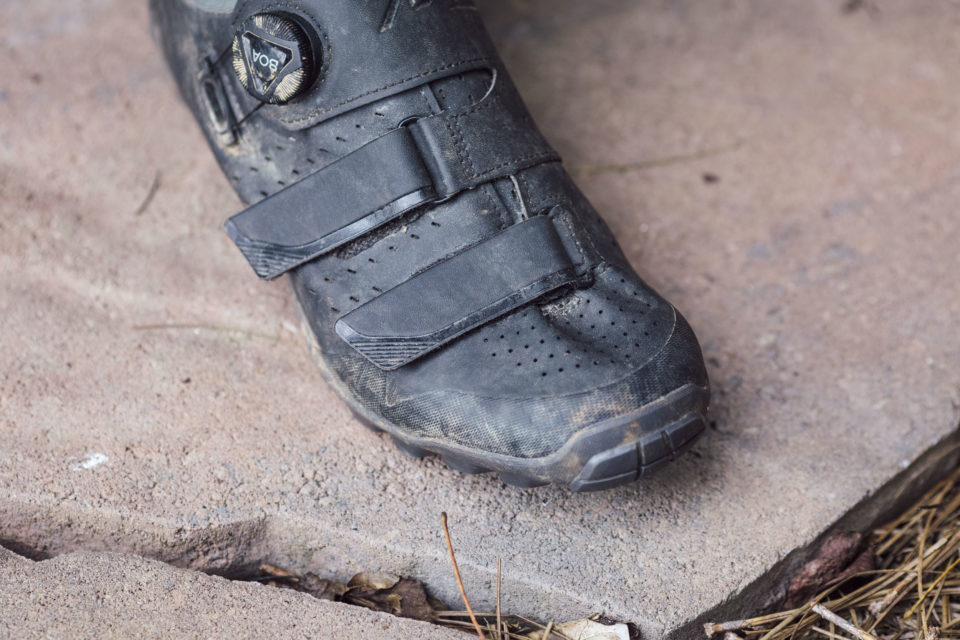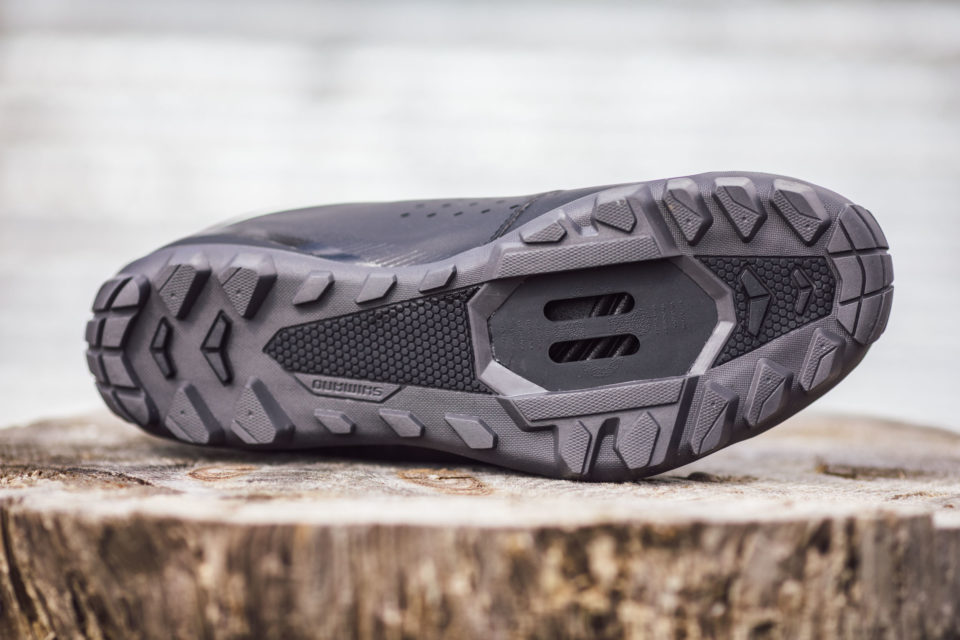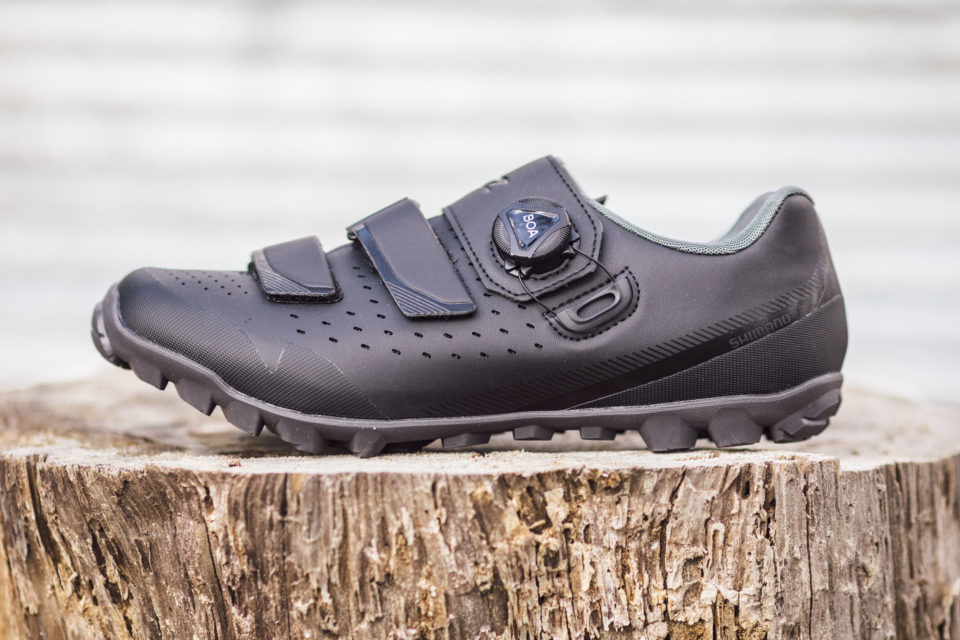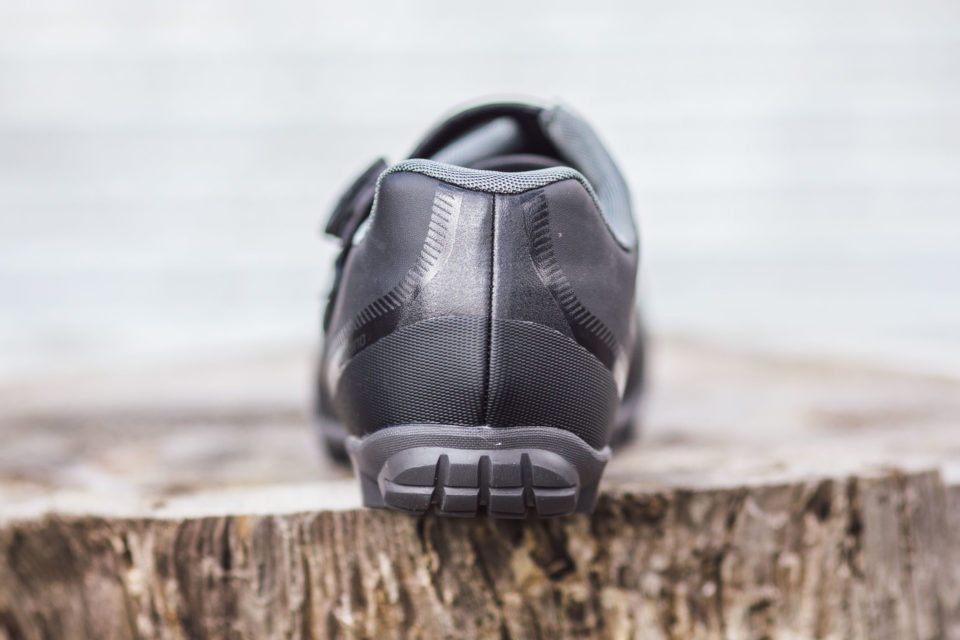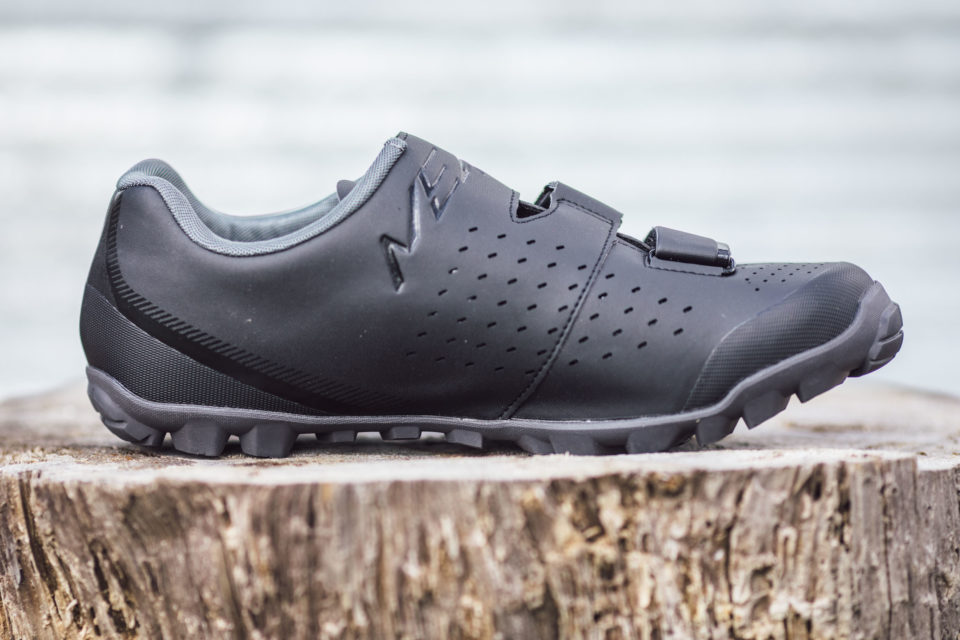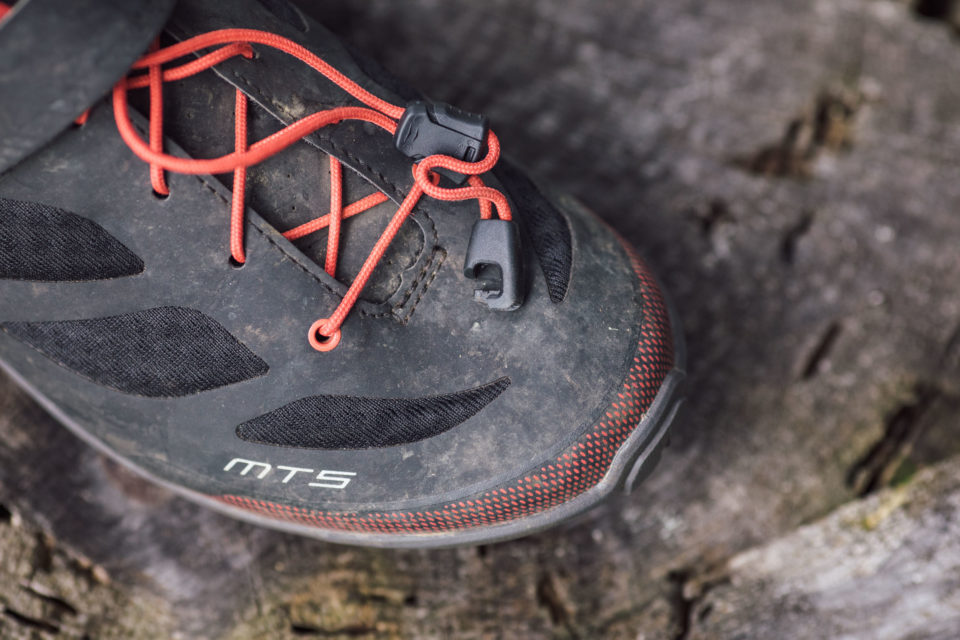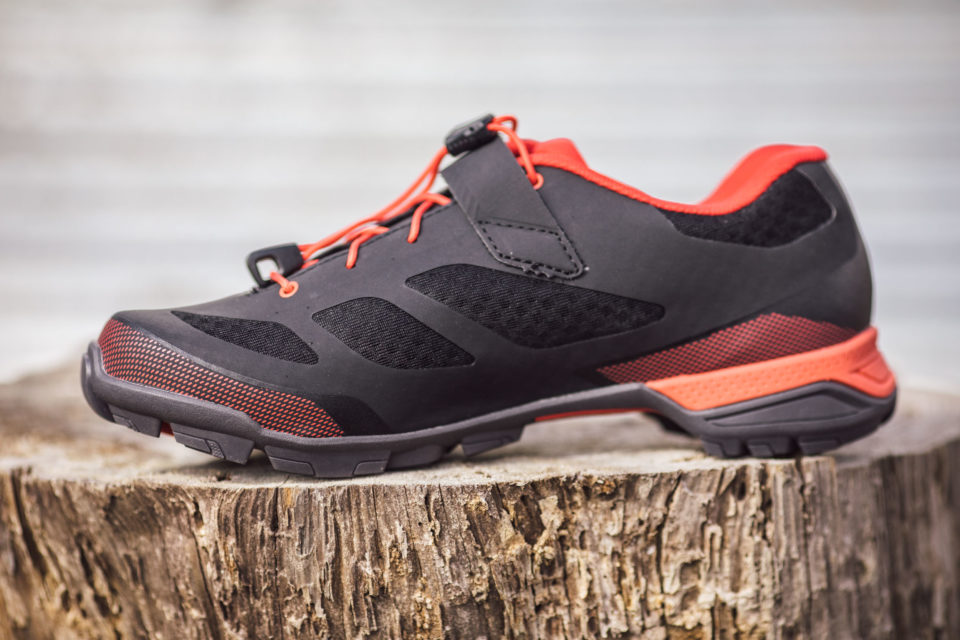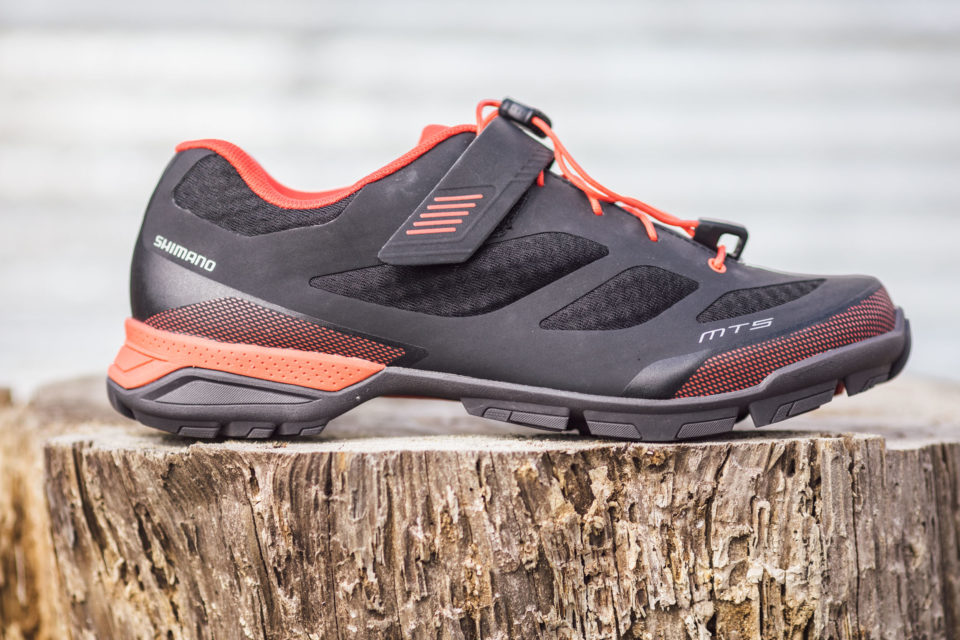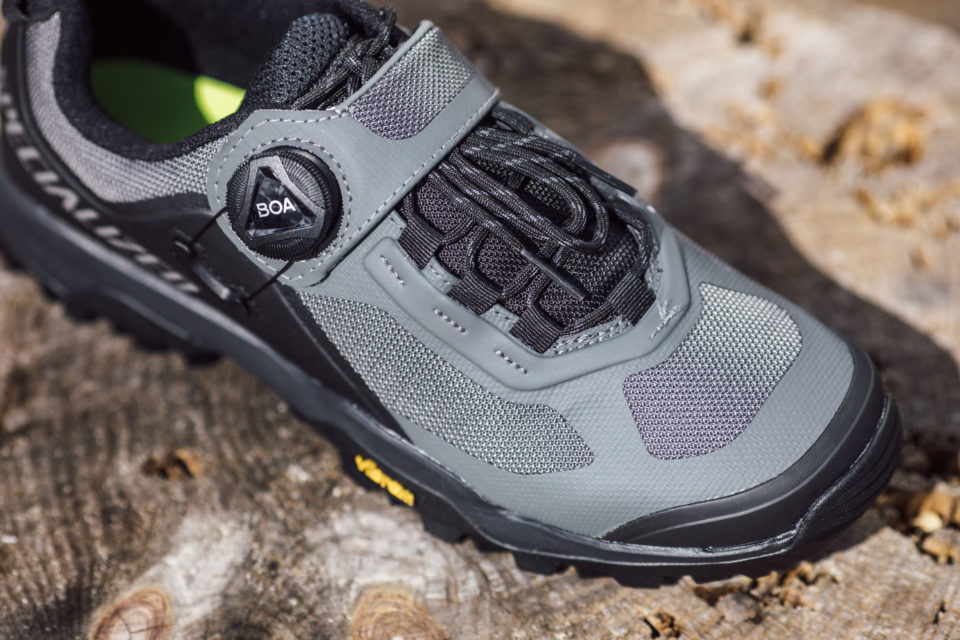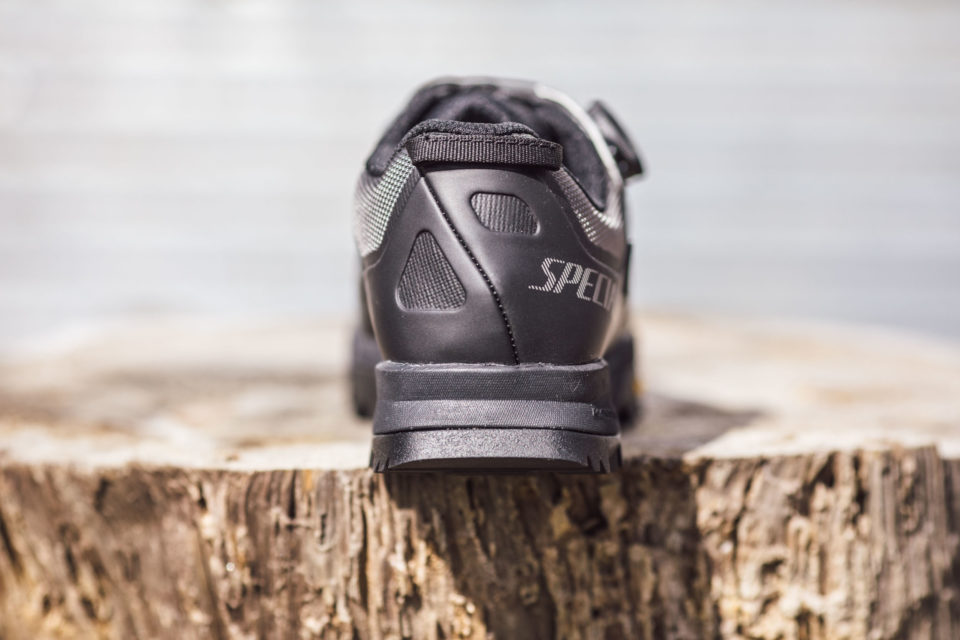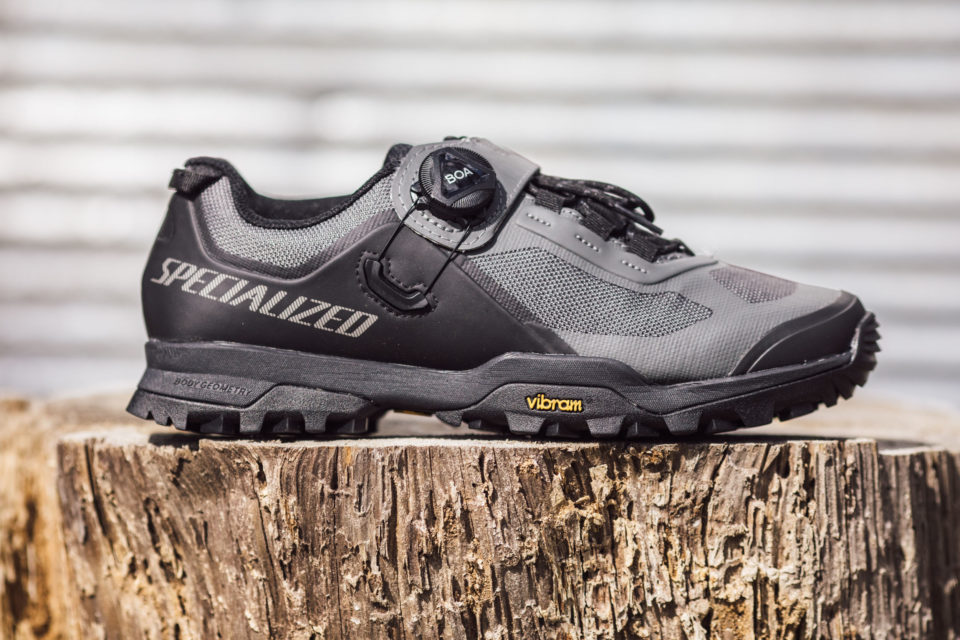Best of the Best: Clipless Shoes for Bikepacking
Share This
We took six of the most well-regarded clipless shoes on the market and put them to a test throughout a season of riding. Find a review of each here, alongside detailed insight into how to choose the best clipless shoes for bikepacking…
Last year, I had to retire my beloved Specialized 2FO ClipLites. What a pair of shoes they were! They fit like a glove, with no heel slippage, zero aches and pains, and just enough room to wiggle my toes a bit. If need be, I could hike in them for hours, even days. The secure fit, rugged tread, and sticky sole made hiking easy. They also kept my feet nice and dry after repeated light stream crossings. What’s more, that water shedding characteristic didn’t wear off after a month’s use. It lasted for years. But, all good things must come to an end, and those shoes were finally starting to separate at the edges and the rubber soles were gnarled. Instead of opting for a new pair of 2FOs, I decided to use this opportunity to check out some of the competition.
Why Clipless?
I’m not a racer. Speed is rarely my focus on a ride, especially during bikepacking trips. I don’t worry too much about pedal efficiency or power transfer. On extended tours, a flat shoe fits my needs best. When pack space is at a premium, who wants to lug around a second pair of shoes? But, when the ride is limited to a couple days or a week, and the route includes technical singletrack, clipless shoes are awesome. In flats, I lack the confidence to approach burly or technical climbs, and steep descents can be unnerving. With clipless shoes and pedals (aka SPDs), I’m not afraid to tackle the rough stuff, and that rough stuff is usually where I have the most fun.
So, I’ll Tell you What I Want…
Finding the “best” clipless shoes for bikepacking is a tall order, because that determination is based upon individual priorities. That’s why it’s important to ask yourself what matters most to you in terms of the shoes you wear. Are you looking for pedaling efficiency or speed? Do you often ride in wet conditions? Are you cold or hot-natured? Do you spend a lot of time hiking with your bike? Are you working within a tight budget? While these priorities can change to some degree depending on what, where, and when you’re riding, asking yourself these questions provides a good framework for finding the right shoe.
When I’m looking for a bikepacking shoe, finding one that is comfortable both on and off the bike is my top priority. Comfort is clearly a subjective experience, but for me, a comfortable shoe is one that fits well. It needs to be secure without strangling my foot. My heel needs to be held in place… slippage is a major annoyance. Versatility is another big concern for me. I want a shoe that has some flex, so my foot can move naturally on hikes, but enough stiffness and support that I can pedal efficiently and not feel the cleat or pedal underfoot—a more flexible sole can often be the source of foot pain over long rides. I want soles with well-integrated cleat openings for quick engagement, while also offering good traction on hikes. In short, I want a shoe that will perform at least as well off the bike as it does while riding. Another, lesser consideration, is weather protection. I want a shoe that sheds water from a light rain or creek crossing, but doesn’t suffocate my feet either. Good ventilation is a must.
A Word on Shoe Sizing
This is a topic I’ve never given too much consideration to in the past. My shoe size falls somewhere between a US women’s 8.5 and 9. It’s more often an 8.5, but sometimes I need to size up to a 9. I generally try shoes on in a shop, but, given there’s a pandemic afoot, and the fact that all these shoes were provided for this review, I opted to estimate my sizing upon the different manufacturer’s sizing charts. Bontrager, Giro, and Specialized list their shoe sizes by four different measurement systems: European (EUR or EU), United States (US), United Kingdom (UK), and centimetres (cm). Shimano lists their sizes by each of those same “standards,” minus the UK measurement, and Pearl Izumi only lists their shoe sizes by their European and US values.
Coming from the land of miles, cups, and pounds, I can appreciate that various countries have different systems of measurement. What I don’t understand is why, within the same system, there is such inconsistency in sizing. For example, Specialized’s 40 EU is equivalent to a US women’s size 9 and a UK 6.5, while Bontrager lists their 40 EU as equivalent to an 8.5 US women’s and a UK 7.5. The most consistent measurement across the brands is that of centimeters, varying by only tenths of a centimeter between brands. While that seems obvious, it’s not the most convenient measurement. Most manufacturers don’t actually use centimeters as their standard measurement, so you have to refer to their sizing chart to find equivalents. Additionally, if you want to purchase certain manufacturers’ shoes, for example Pearl Izumi, you’d be out of luck if you were relying on cm to order.
I guess the lesson is this: If possible, buy them from your local bike shop where you can try them on before making a purchase. If that’s not possible, go with the “cm” measurement when ordering online or placing an order with your shop. If the shoes you would like to order don’t have a centimeter equivalency, do a little research to see what others have to say regarding sizing. Worst case scenario, order a couple of sizes, see which fits best, and return the other pair. Don’t compromise on finding a good fit, because an ill-fitting shoe won’t provide good performance and will never be comfortable.
The Contenders
Since the early spring, I’ve been test-driving six different pairs of clipless MTB shoes to try and find the perfect replacement for the 2FOs. I chose these specific shoes based on other reviews and the fact that they’re each regarded as some of the best and most reliable shoes on the market. I’ve been riding both technical singletrack and gravel in them, and I’ve also done a fair bit of hiking in these shoes. Bikepacking trips have been limited to mostly local overnighters. All of the shoes, with the exception of the Specialized Rime 2.0, are advertised as being women-specific.
When comparing the shoes, I measured them based upon the parameters that matter most to me. I assigned a maximum point value per characteristic and weighted those maximums depending on how important the metric is to me. Durability did not directly impact point totals, as I haven’t been wearing any of the shoes long enough to know how they will fare in the long run. Still, I made notes about elements of the shoe that I thought were particularly well-made or, conversely, those that appear to be potentially troublesome.
Bontrager Foray
Bontrager’s Foray is a really slick looking shoe. I usually lean toward basic black or gray riding shoes, but I have to say that the Lotus Purple is a really stunning color. The Foray has several other things going for it as well. It’s the lightest weight of the shoes I tested, it breathes well, seems durable, and is backed by the unconditional Bontrager guarantee.

The Foray’s sole is a nylon composite, and while Trek gives it a 6 out of 14 on their stiffness index, I actually feel like it’s a little stiffer than that. Unfortunately that stiffness doesn’t translate into better power transfer. This is, in part, due to the fact that the last (the upper part) of the shoe is just too large. While this is somewhat subjective, it’s hard for me to imagine that there are many people for whom this is not the case. I have an average width foot, and, when the single offset BOA dial is fully tightened and the hook and loop closure is pulled as tightly as possible, I cannot get the shoe to keep my forefoot secure. Without a secure forefoot, my heel tends to lift while hiking, which causes both discomfort and instability. For those people who have wide or large volume feet, these shoes may prove to be more comfortable.
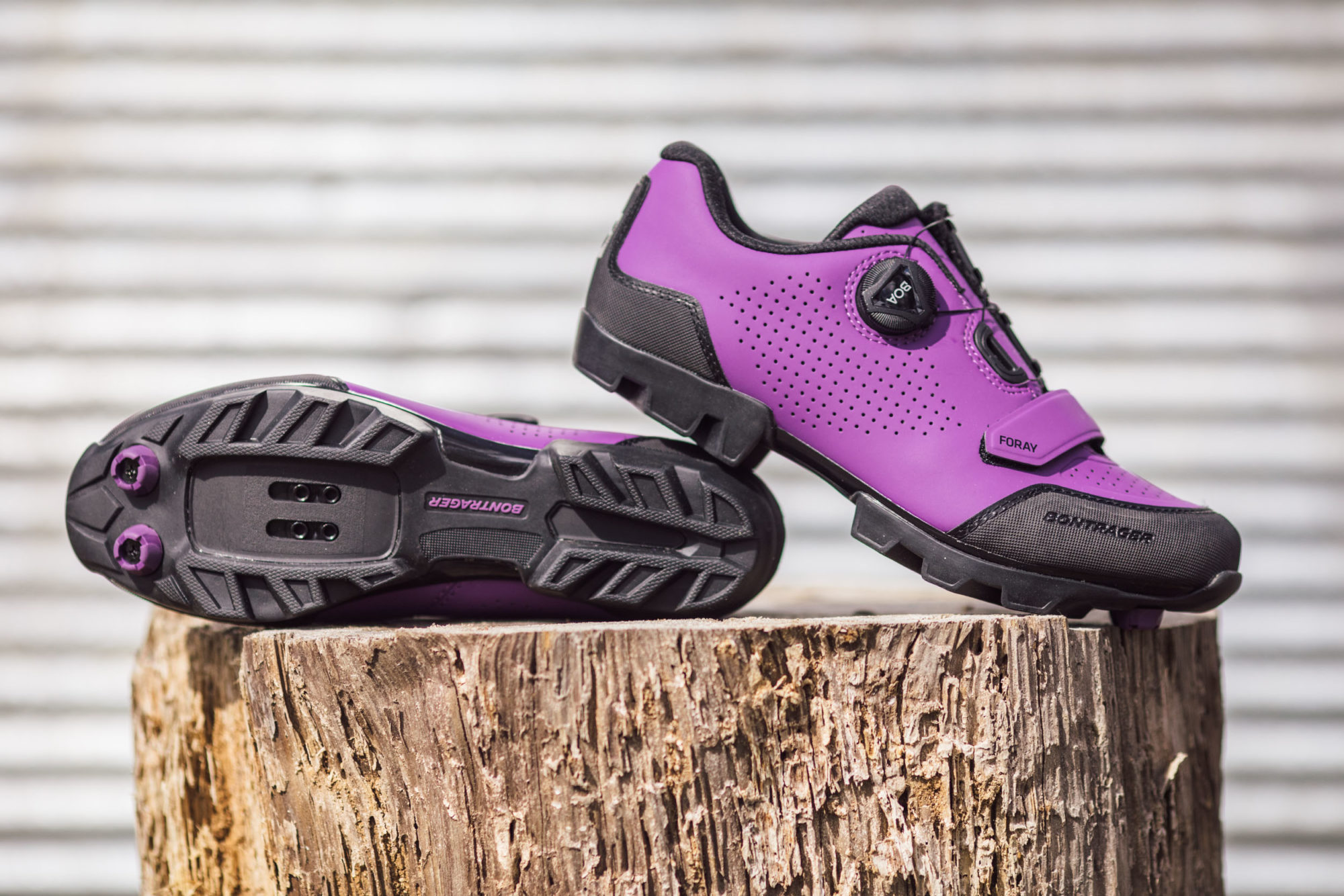
Aside from the heel slippage, the double lugs at the forefoot and the knobby tread on these shoes are well-suited for hiking on loose terrain. However, the outsoles are relatively narrow, providing less surface contact and grip on smoother surfaces and decreased ankle stability. In short, they seem like they would be better suited for gravel rides and hikes than the rough, rocky, and rooty terrain I generally find myself on.
- Size Tested EUR 40 / 25.7cm / 8.5 US / 7.5 UK
- Weight (per shoe) 333 grams
- Place of Manufacture China
- Price $149.99
- Manufacturer’s Details TrekBikes.com
Giro Ventana W Fastlace
The Giro Ventana Fastlace is a great shoe. It’s comfortable from the get-go. The toe box is on the wider side of the cycling shoe spectrum, but the last isn’t oversized. The result is a fit that provides enough space for the toes, while still providing a secure fit and a feeling of pedal connectivity. The nylon shank on which the shoe is built doesn’t feel quite as rigid as other options I’ve tried, so power transfer may be minimally compromised. That’s a sacrifice I’m willing to accept during a ride, because these shoes are very comfortable off the bike and perform well on hikes. The midsole offers enough flexibility for natural foot movement with only the slightest heel lift, and the EVA molded footbed offers moderate arch support. The relatively wide outsole provides ankle stability, and Giro’s Sensor® rubber provides decent traction on hard surfaces. The rubber isn’t the stickiest compound I’ve come across, and a beefier tread would offer a better bite on loose gravel, but I’ve been pleased with their overall trail performance. Beyond their hikeability, these shoes are also comfortable for walking on paved surfaces, making them a great option for a touring shoe, where some forays into the city may be on the agenda.

The Ventana’s last is constructed out of a single piece of tough, breathable, woven fabric called Synchwire. It would stand to reason that such a design would be more durable than other designs that rely on sewn or welded seams to hold the last together. Additional solid panels are bonded to the Synchwire to provide added durability and wet-weather protection. While no shoe can keep feet dry during some of the torrential downpours we have in North Carolina, the Ventanas have done a good job in light rain and across shallow creek crossings. Another element that adds to the durability of the shoe, in my opinion, is the simple quicklace system with a single hook and loop strap across the tongue. I love the “dialed” in feel of a BOA closure, but on extended journeys or ones in which you won’t have easy access to a bike shop, basic is better. Worst case scenario, the quicklace mechanism breaks and you have to revert to tying a knot.
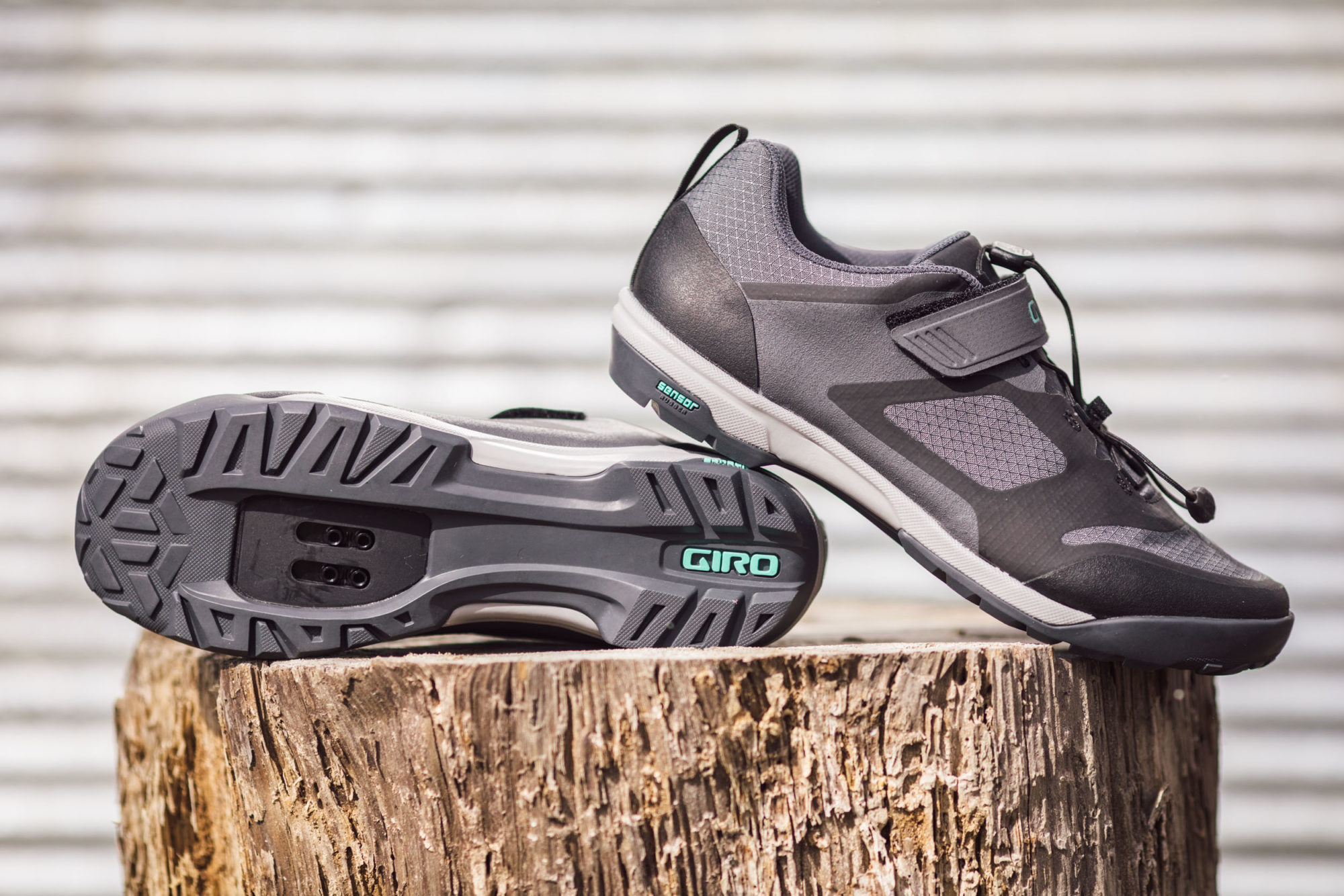
At $129.95, the Giro Ventana Fastlace are one of the most economical pairs of shoes I’ve tested, and with their solid performance and comfort both on and off the bike, they are definitely one of my favorites.
- Size Tested EUR 40 / 25.5cm / 8.5 US / 6.5 UK
- Weight (per shoe) 363 grams
- Place of Manufacture Vietnam
- Price $129.95
- Manufacturer’s Details Giro.com
Pearl Izumi Women’s X-Alp Elevate
Pearl Izumi’s X-Alp Elevate perform exceptionally well both on and off the bike. The ¾ nylon and carbon composite shank provides a solid platform for powerful pedaling, but enough pliability in the toe box that the foot can flex fairly naturally on hikes. The EVA midsole and foam insole add to that sense of flexibility, while providing modest cushioning. For added comfort, the entire collar of the shoe is also lightly padded. A single, central BOA closure works well to adjust the shoe on the fly. There is also a single hook and loop strap across the forefoot for added security.
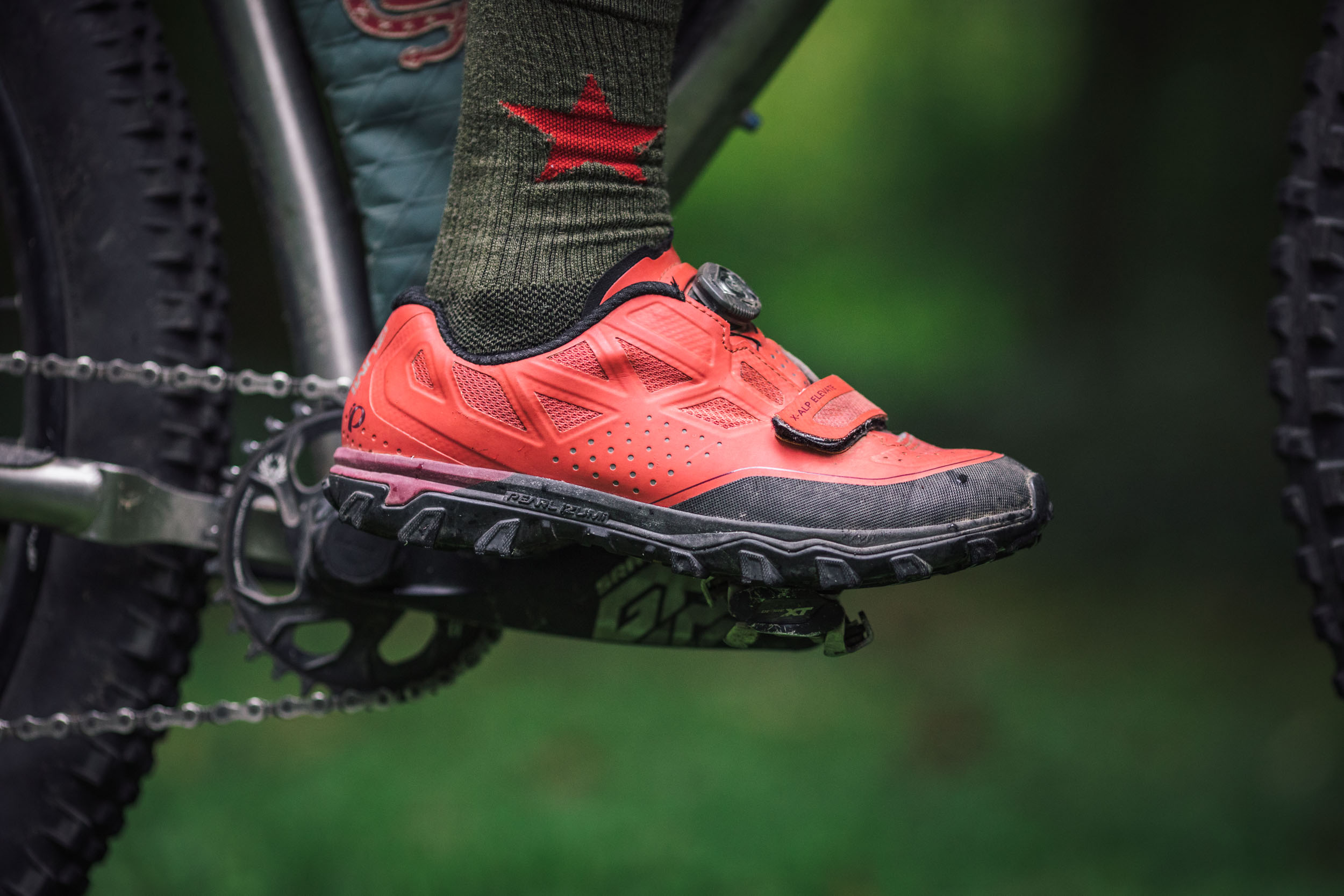
As is the case with several of the shoes I tested, the upper is seamlessly constructed and does a good job of keeping feet dry through stream crossings and moderate rainfall. Breathability is preserved in “cut-aways,” where only the inner layer of vented fabric is preserved. The Vibram Megagrip rubber outsole is not the stickiest compound available, but paired with the aggressive tread pattern, these shoes provide impressive traction.
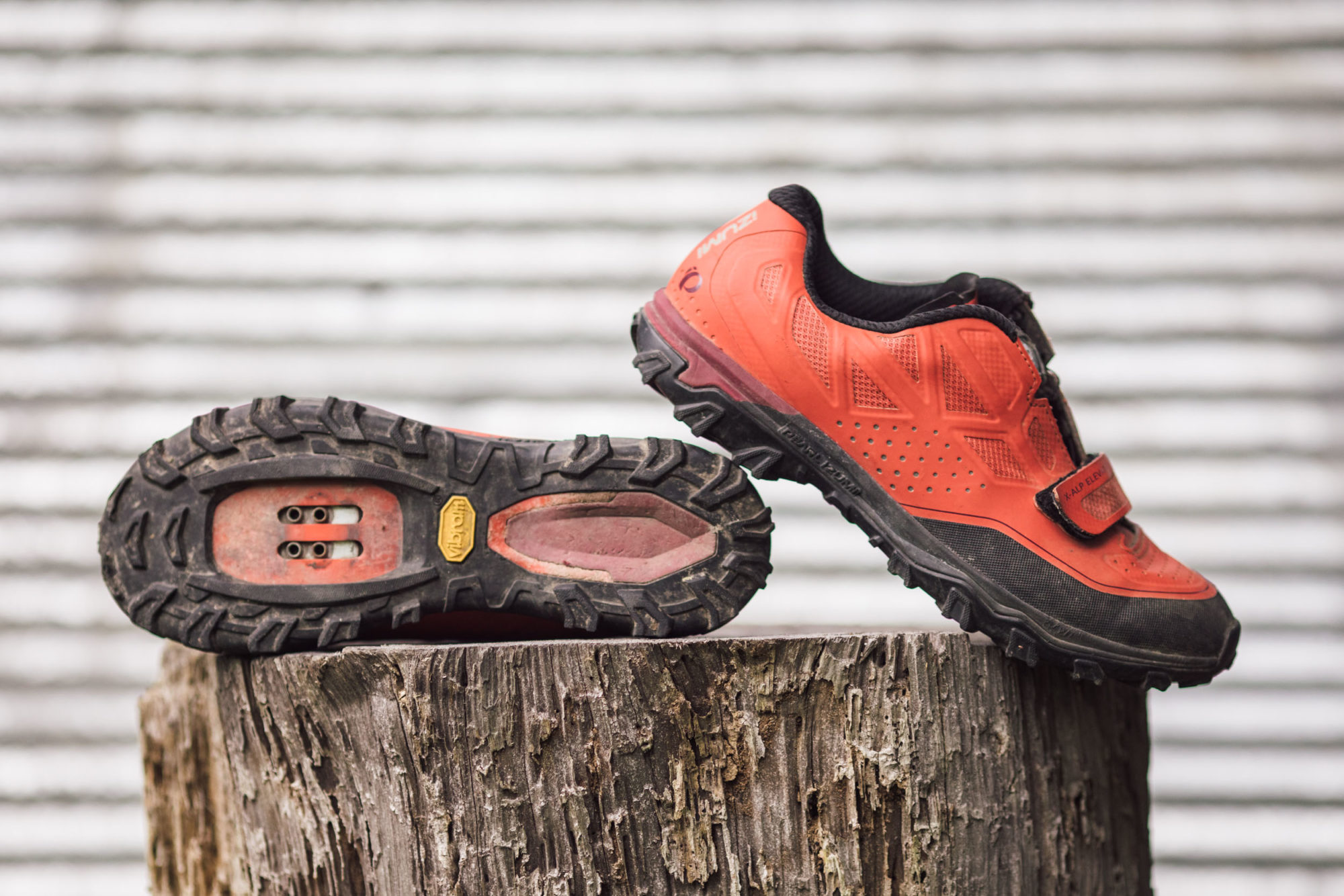
All in all, the X-Alp Elevate is a super solid, high performance, comfortable shoe. That said, I did find that the shoe ran on the small side, especially in the metatarsal area. So, unless your feet are quite narrow, I would suggest ordering up ½ size or trying them on in person to find the best fit. In terms of durability, the soles appear to be sturdy and the seamless uppers with added toe guard should hold up well. Unfortunately, on the pair I tested, the material that covers the hook and loop strap on each shoe became delaminated from the strap after wearing them only a handful of times. I’m certain Pearl Izumi’s warranty would cover the replacement or repair of this defect, but it seems the problem could have been solved in production with the addition of a few stitches.
- Size Tested EU 40
- Weight (per shoe) 360 grams
- Place of Manufacture China
- Price $180
- Manufacturer’s Details PearlIzumi.com
Shimano ME400
Shimano’s ME4 shoes are a lightweight, good looking pair of shoes. With their glass-reinforced midsoles, they feel more rigid than the other shoes I tested, capable of providing good power transfer on the pedals. At the same time, the Michelin rubber outsoles of the ME4 are nice and sticky, and the tread pattern is aggressive, proving great traction on varied surfaces. The last is constructed from a synthetic leather that is well ventilated and offers decent wet weather protection. At its price, the ME4 is a solid contender for the right person.
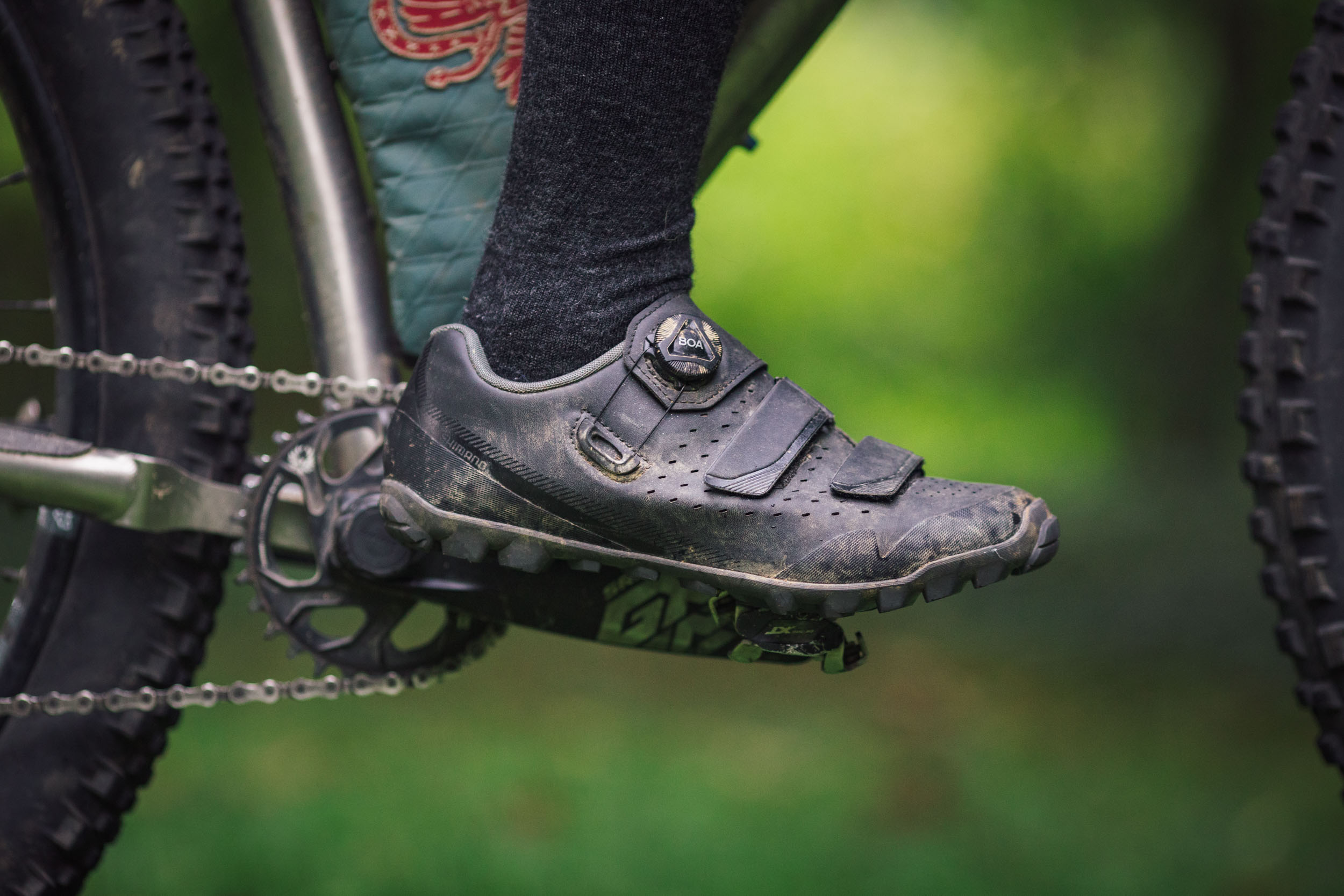
Unfortunately, I am not that person. As was the case with the Foray, the ME4 was just too large for my foot. When I initially tried on the shoes, the size 41 EU felt slightly loose, but when I measured the space between my big toe and the end of the shoe, they seemed like the right length. Just to be sure I had the right size, I tried on a size 40 EU, which were definitely too short for comfort. The problem appears to lie in the overall girth of the shoe’s last. There’s just too much material comprising its upper, so the foot isn’t well-secured, no matter how tightly the straps are tightened.
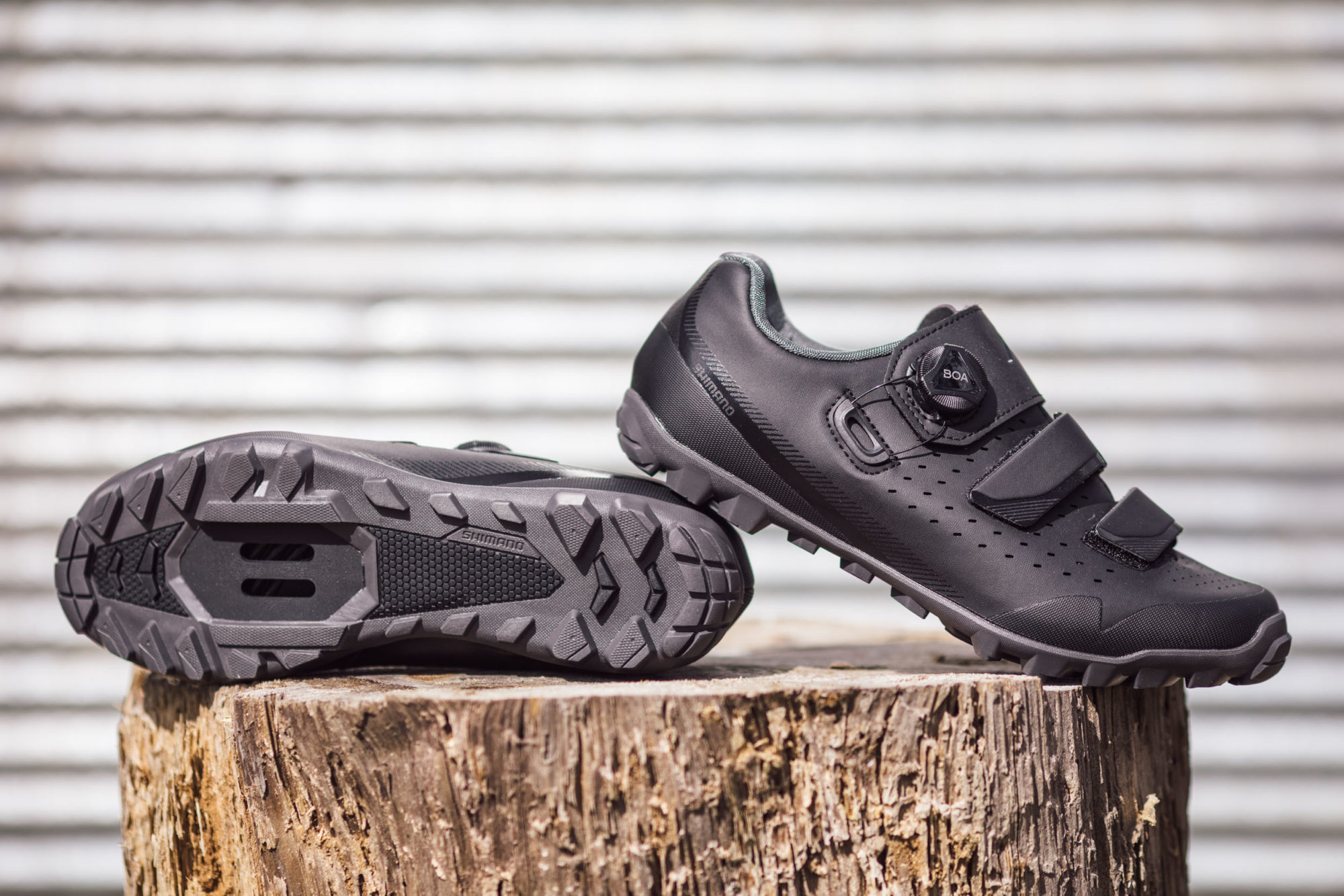
The closure system consists of three straps. The foremost and middle straps are hook and loop, while the strap closest to the ankle has a laterally placed BOA dial. The BOA dial works as expected to cinch down the top strap, but the other straps cannot be pulled tightly enough to create a snug fit. Additionally, the top strap is wide, extending above the collar of the shoe, which caused some rubbing along the talus of my foot/ankle. As a result of the loose fit, I was unable to appreciate the pedaling efficiency or power that I expected from this shoe, and I was also uncomfortable hiking. For an individual with a more rounded or voluminous foot, the ME4 may very well be a great shoe.
- Size Tested EUR 41 / 25.8cm / 8.5 US
- Weight (per shoe) 334 grams
- Place of Manufacture China
- Price $130
- Manufacturer’s Details bike.shimano.com
Shimano MT5
Shimano classifies their MT5 as a mountain touring shoe. With its highly breathable last, flexible sole, no-fuss closure system, and excellent price point, this shoe fits the bill. What this shoe lacks in power transferability, it makes up for in off-bike comfort. With a freely flexing foot, this shoe feels more like a walking shoe than either a riding or hiking shoe. But, with the Michelin rubber and fairly aggressive tread, it also provides good traction for rock scrambles and loose gravel alike. The insole of this shoe is lacking in cushion or arch support, so if it were to be used for long days of pounding pavement (if city visits are part of your touring plans), I think adding an alternative insole would really make them great all-rounders. An added insole might also offer additional comfort during a ride, since, as is, the pliant mid-sole does cause a little foot fatigue on long rides.
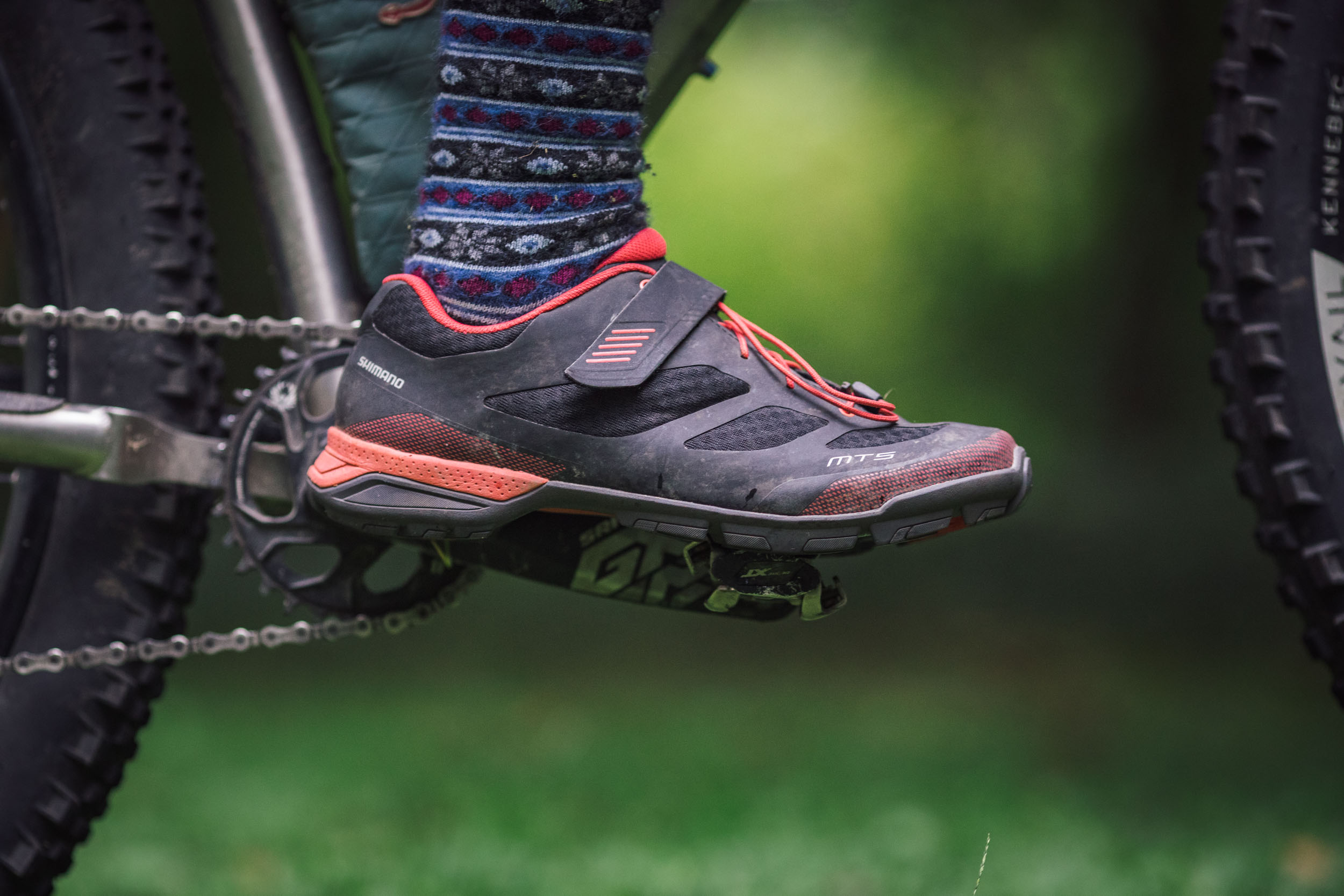
While this pair of Shimano shoes was not nearly as ill-fitting as the ME4s, the last is still a little large for my foot. That was easily remedied by wearing a slightly thicker pair of socks, because the mesh and synthetic leather upper of the MT5 is far easier to tighten using the lace and singular hook and loop strap system versus the more cumbersome straps of the ME4. That said, this closure system is not without its problems. On one of the shoes, the plastic shoelace clip that secures the excess length of shoelace broke after a few uses. The quicklace “clamp” that actually tightens the laces also seems like it may not be terribly durable. After a handful of rides in these shoes, the left quicklace mechanism isn’t gliding very smoothly, making it difficult to tighten the laces. In general, the quicklace seems just a bit gimmicky to me, and I think the shoe would be better without it. I think I may not be alone in that opinion, as the laces provided are excessively long for the quicklace system, yet they are amble if one needs to revert to tying these shoes old-school style.
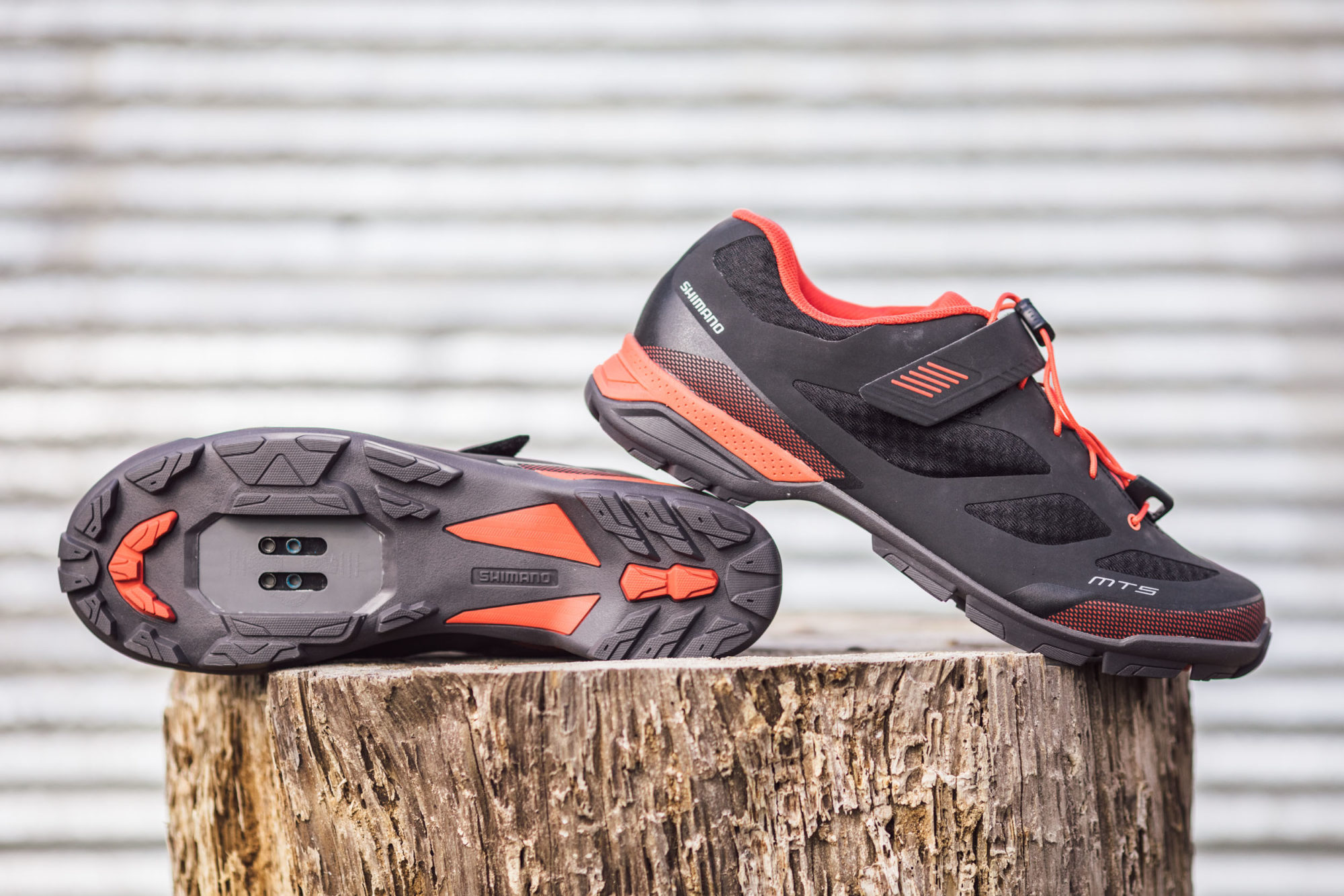
- Size Tested EUR 41 / 25.8cm / 8.5 US
- Weight (per shoe) 340 grams
- Place of Manufacture Cambodia
- Price $110
- Manufacturer’s Details bike.shimano.com
Specialized Rime 2.0
The Specialized Rime 2.0 is a fantastic performer. It will take a little more time in these shoes to know if they are on par with the 2FO ClipLites, but I’m optimistic. The Lollipop™ nylon composite midsole plate is not the stiffest on the market, but it still provides plenty of power transfer with enough flexibility that hiking feels completely comfortable. The Vibram rubber outsole with moderately aggressive tread design is similar to that of the X-Alp Elevate, but includes additional toe protection. These soles offer decent traction on smooth surfaces, but really dig in on looser terrain. A cushioned EVA midsole, molded heel cup, and lightly padded collar and tongue add to the all-around comfort of this shoe.
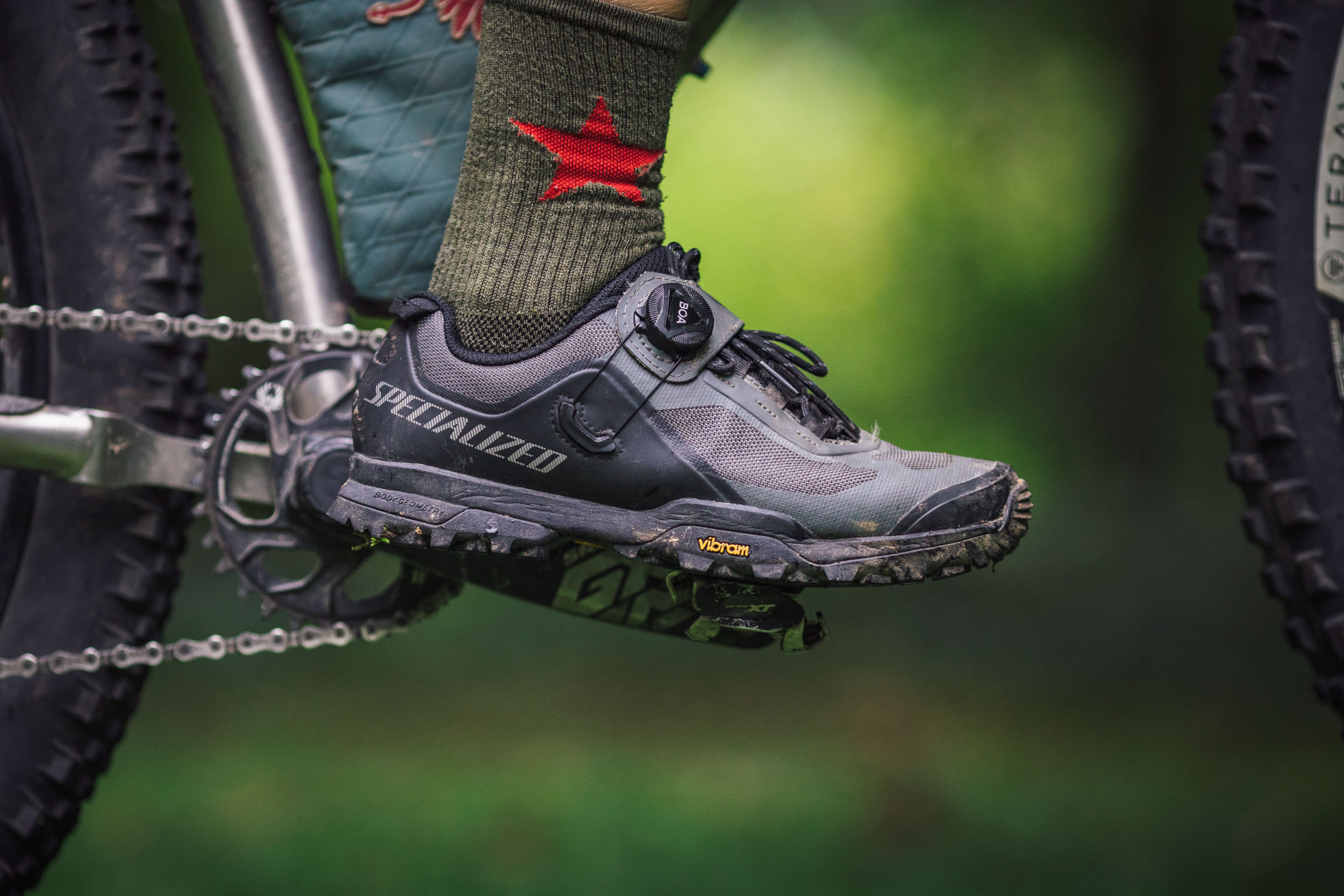
These shoes appear to be very well constructed from durable materials. The upper is constructed from X-PEL™ hydrophobic mesh onto which an additional rubber-like layer is welded at the heel and sides of the shoe. The mesh fabric does a good job of keeping the shoes from feeling ridiculously wet from creek crossings and moderate rain showers. More importantly, it seems to really help reduce drying time when the shoes get submerged or drenched. The closure system of the Rime 2.0 is spot on. It combines basic cross-laces with a single offset BOA® S2-Snap dial for on the go fine adjustments. While the BOA adds some risk for closure failure, the lace system is a super safe bet, even for long-haul tours.

At $160, these shoes are on the higher priced end of the shoes I tested, but given their quality, comfort, and the 2-year Specialized guarantee, the price seems justified.
- Size Tested EUR 40 / 25.5cm / 9 US / 6.5 UK
- Weight (per shoe) 1 weighs 356 grams, the other weighs 337 grams
- Place of Manufacture China
- Price $160
- Manufacturer’s Details Specialized.com
Wrap-Up
Finding a shoe that will be a perfect match for everyone is impossible. We each have different criteria by which we judge the merit of a shoe, different ideas of what “comfort” means, and, most importantly, different sized and shaped feet. Each of the shoes that I reviewed has its merits, and I’m sure there are folks for whom each would be a good fit.
From overnighters to more extensive bikepacking “tours,” a good bit of my time is spent off the saddle. So, for me, the best shoes are those that perform at least as well off of the bike as they do while riding. Sometimes that means sacrificing a little on the power transfer. I’m okay with that, because, after all, I don’t approach bikepacking as a contest. If a pair of shoes can comfortably take me through diverse landscapes, whether I’m riding, hiking, or walking, I’m sold.
As for the shoes in this review, I’m a bit torn. For all-around use, that includes the possibility of on-pavement city wear, the Giro Ventana are hard to beat, especially at their price. In fact, they were the pair I took on a 500+ mile bikepacking trip in August. That said, with its impressive comfort, solid pedaling performance, and increased traction for burly hikes, Specialized has, once again, impressed me and the Rime 2.0 wins my vote for best clipless bikepacking shoes in this group.
Know of any other shoes fitting to this this category that you’d like to see compared or reviewed? Let us know in the comments below…
Please keep the conversation civil, constructive, and inclusive, or your comment will be removed.






